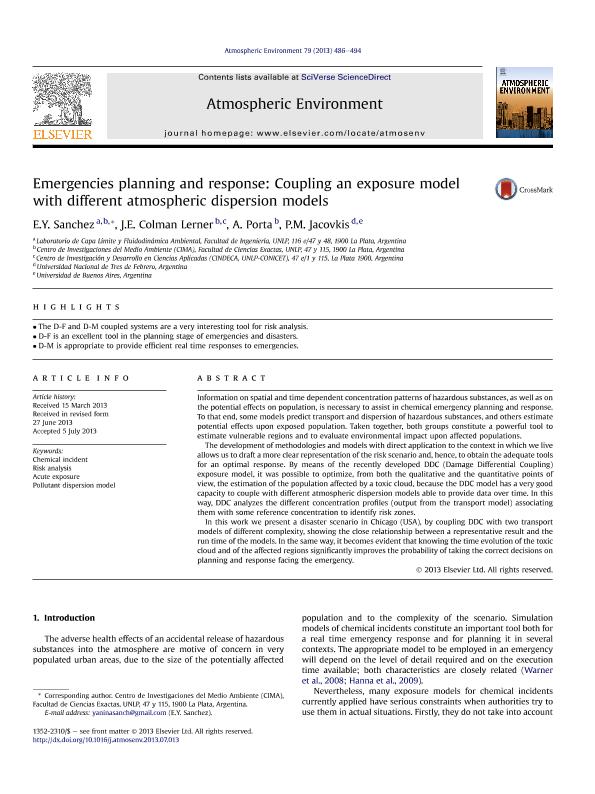Artículo
Emergencies planning and response: Coupling an exposure model with different atmospheric dispersion models
Fecha de publicación:
07/2013
Editorial:
Elsevier
Revista:
Atmospheric Environment
ISSN:
1352-2310
Idioma:
Inglés
Tipo de recurso:
Artículo publicado
Clasificación temática:
Resumen
Information on spatial and time dependent concentration patterns of hazardous substances, as well as on the potential effects on population, is necessary to assist in chemical emergency planning and response. To that end, some models predict transport and dispersion of hazardous substances, and others estimate potential effects upon exposed population. Taken together, both groups constitute a powerful tool to estimate vulnerable regions and to evaluate environmental impact upon affected populations. The development of methodologies and models with direct application to the context in which we live allows us to draft a more clear representation of the risk scenario and, hence, to obtain the adequate tools for an optimal response. By means of the recently developed DDC (Damage Differential Coupling) exposure model, it was possible to optimize, from both the qualitative and the quantitative points of view, the estimation of the population affected by a toxic cloud, because the DDC model has a very good capacity to couple with different atmospheric dispersion models able to provide data over time. In this way, DDC analyzes the different concentration profiles (output from the transport model) associating them with some reference concentration to identify risk zones. In this work we present a disaster scenario in Chicago (USA), by coupling DDC with two transport models of different complexity, showing the close relationship between a representative result and the run time of the models. In the same way, it becomes evident that knowing the time evolution of the toxic cloud and of the affected regions significantly improves the probability of taking the correct decisions on planning and response facing the emergency.
Palabras clave:
Chemical Incident
,
Risk Analysis
,
Acute Exposure
,
Pollutant Dispersion Model
Archivos asociados
Licencia
Identificadores
Colecciones
Articulos(CCT - LA PLATA)
Articulos de CTRO.CIENTIFICO TECNOL.CONICET - LA PLATA
Articulos de CTRO.CIENTIFICO TECNOL.CONICET - LA PLATA
Articulos(CIMA)
Articulos de CENTRO DE INVESTIGACIONES DEL MAR Y LA ATMOSFERA
Articulos de CENTRO DE INVESTIGACIONES DEL MAR Y LA ATMOSFERA
Articulos(CINDECA)
Articulos de CENTRO DE INV EN CS.APLICADAS "DR.JORGE J.RONCO"
Articulos de CENTRO DE INV EN CS.APLICADAS "DR.JORGE J.RONCO"
Citación
Sánchez, Érica Yanina; Colman Lerner, Jorge Esteban; Porta, Atilio Andrés; Jacovkis, Pablo Miguel; Emergencies planning and response: Coupling an exposure model with different atmospheric dispersion models; Elsevier; Atmospheric Environment; 79; 7-2013; 486-494
Compartir
Altmétricas




